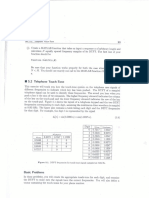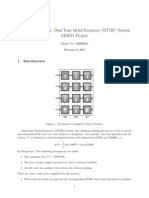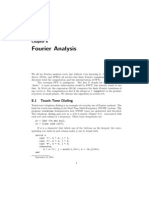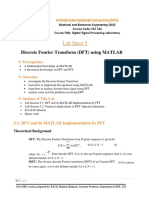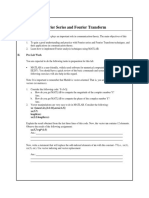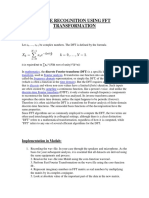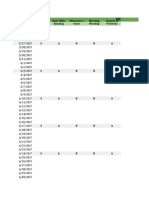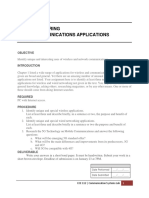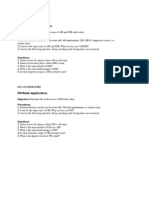0% found this document useful (0 votes)
24 views1 pageMath 313/513, Homework 10, MATLAB (Due Thurs Apr. 12th)
This document provides instructions for a MATLAB homework assignment to analyze an audio signal of a dialed phone number using Fourier analysis. Students are asked to download an audio file, plot the signal, isolate samples corresponding to each pressed number, perform an FFT on each sample to determine the constituent frequencies, and thereby deduce the entire phone number. The homework requires creating a MATLAB script file containing the work and comments, including the solved phone number at the end.
Uploaded by
stephen562001Copyright
© © All Rights Reserved
We take content rights seriously. If you suspect this is your content, claim it here.
Available Formats
Download as PDF, TXT or read online on Scribd
0% found this document useful (0 votes)
24 views1 pageMath 313/513, Homework 10, MATLAB (Due Thurs Apr. 12th)
This document provides instructions for a MATLAB homework assignment to analyze an audio signal of a dialed phone number using Fourier analysis. Students are asked to download an audio file, plot the signal, isolate samples corresponding to each pressed number, perform an FFT on each sample to determine the constituent frequencies, and thereby deduce the entire phone number. The homework requires creating a MATLAB script file containing the work and comments, including the solved phone number at the end.
Uploaded by
stephen562001Copyright
© © All Rights Reserved
We take content rights seriously. If you suspect this is your content, claim it here.
Available Formats
Download as PDF, TXT or read online on Scribd
/ 1




